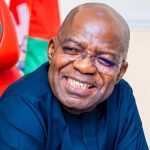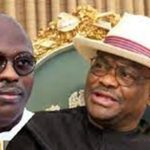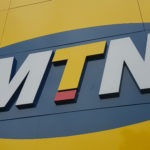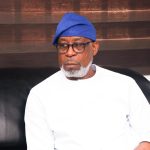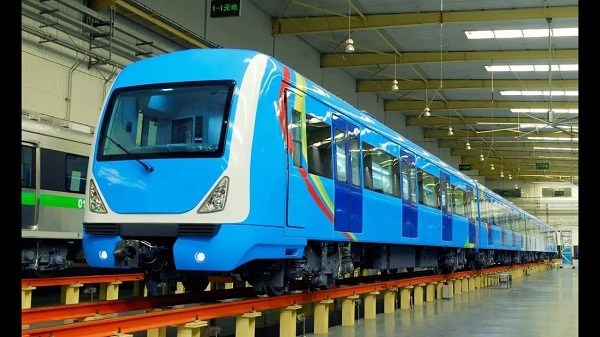Sanwo-Olu and Lagos blue rail: Hope in a season of despair
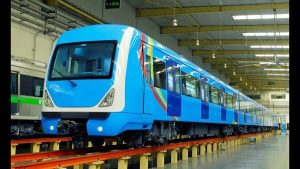
BY KEN UGBECHIE
For Lagos commuters, 2022 ended with a dose of goodness and fatness. A harvest of hope; a herald of sweetness that would usher in 2023 with a bounty of relief. The Lagos blue rail project is that herald. It capped 2022 with creamer enough to serenade many commuters.
Governor Babajide Sanwo-Olu, not one notorious for empty soapbox promises and political grandstanding, has pulled a stunt in the transport sector. A testimony of his resolve, integrity and leadership philosophy to make his word, his bond. He promised it during his electioneering for his first term. He delivered it as promised. He promised the first phase. He delivered the first phase.
Just as the good Lord promised His faithful a bountiful end of year as captured by the Psalmist. “You crown the year with Your goodness, And Your paths drip with abundance. They drop on the pastures of the wilderness, And the little hills rejoice on every side. The pastures are clothed with flocks; The valleys also are covered with grain; They shout for joy, they also sing” (Psalm 65: 11-13 NKJV). So has Sanwo-Olu crowned 2022 with goodness for Lagos commuters.
To an outsider, an intra-city light rail service may not be a big deal. Not so for Lagosians. It’s a big deal. Indeed, the real deal. Traffic-wise, cosmopolitan Lagos has joined buzzing cities around the world in the area of traffic chaos. And it’s not for want of strategy or efforts by the relevant authorities to tame the beast of gridlock. Never! Lagos has its fair share of gridlock because Lagos remains the commercial hub of Nigeria. Nigerians and non-Nigerians migrate to Lagos in droves on a daily basis. And this is a mix of the bad, the good and the wacky. Lagos absorbs them all. Being at a time a Federal capital complete with all the pomp and majesty of federal might – infrastructure, bureaucracy and full compliment of state actors – Lagos has benefited lavishly from the development purse of the central government. But such development has also thrown up its special variant of challenge: attracting all manner of persons into Lagos including whelps, hoboes and tramps. A mega-city of such magnitude will always choke with traffic, human and vehicular.
As it is with Lagos, so it is with other mega-cities across the globe. Traffic congestion has assumed a major headache for urban planners and development offices in major cities worldwide. It’s worrisome because different studies have shown that snarling traffic eats deep into the pocket by robbing people of revenue they could have earned if they were freed of gridlock.
A 2019 Global Traffic Scoreboard report published by the data analytics company INRIX, analyzed per capita time spent in traffic congestion among drivers in more than 900 cities across 43 countries. The study examined commute times during peak and off-peak hours. It also examined commuter behaviour relative to traffic comfort or discomfort. A key aspect of the report’s focus on the United States was the monetisation of lost hour in traffic. The report found that on average, Americans lose 99 hours a year to traffic, equivalent to a loss of $1,377 per driver. Some US cities are immune from terrible traffic, but certainly not New York. The US commercial capital has its equivalent in Nigeria: Lagos.
Another report, the 2021 edition of the TomTom Traffic Index, ranked the top 50 global cities with worst traffic. Lagos was not listed among the Top 50 but that does not exonerate the buzzing commercial capital of Nigeria from the scourge of traffic crisis. New York city, famed for its high profile burst of commerce with heavy infusion of aristocratic lifestyle, was spotted at number 43 on the top list of 50, making her a learner compared to cities like Istanbul (Turkey), Moscow (Russia), Kiev (Ukraine), Bogota (Colombia) or Mumbai (India). These are the top hitters on the global worst traffic index. The only African country on the notorious list of top 50 is Cairo (Egypt) at number 41.
Lagos is not captured among the top 50 (probably because Nigeria was not under scrutiny by the researchers) but the leadership, historically, had always envisioned a fully urbanised Lagos. Needless repeating the obvious. Lagos has been lucky with leadership. Right from 1979 when Alhaji Lateef Jakande, arguably the best governor ever to superintend over the state, mounted the saddle, Lagos has passed through the best hands in Nigeria’s leadership firmament. Buba Marwa, the iconic military administrator of Lagos was the best in his era. Bola Ahmed Tinubu who succeeded Marwa redefined leadership in the state, expanding the frontiers of his cabinet to include persons from other parts of the country. Tinubu, a smart head hunter, remains the best in the management of the diversity of Lagos. Babatunde Raji Fashola, Akinwunmi Ambode left bold imprints of development, especially road infrastructure, healthcare and education.
The incumbent Sanwo-Olu is etching his own name in the honour’s roll. After the splendid manner he tackled the novel Covid-19 pandemic which first broke out in Lagos, Mr. Governor has continued to astound his critics with his leadership style that keeps the door open as against some governors that have made themselves inaccessible both to the living and to the dead.
Recently, Sanwo-Olu added a paragraph to his lengthening development resume. He inaugurated the first phase of the Blue Line project. Conceived as a 27-kilometre rail system from Marina to Okokomaiko, its construction has been divided into phases for ease of implementation and when completed, it is expected to move more than 500,000 passengers daily.
The first phase is a 13-kilometre stretch from Marina to Mile 2 and has five stations at Mile 2, Suru-Alaba, Orile Iganmu, National Theatre and Marina. It is expected to move about 200,000 passengers daily. Get it straight, Sanwo-Olu did not initiate the project. In fact, the Lagos rapid transit plan started in 1983 with the metroline network developed by the Lateef Jakande government. The military administration of Muhammadu Buhari (this same Buhari) scrapped the project in 1985 for no justifiable reason. Lagos lost over $78 million on account of that ill-advised abortion of a worthy project.
Sanwo-Olu birthing it to reality, at least the first phase after several flipflops by intervening governments, is both historical and symbolic. Part of the sad tales in Nigeria leadership is that of a succeeding government to abandon the projects of its predecessor, even when such project is in the larger public interest. Sanwo-Olu has demonstrated that he is a different kind of leader; one who would rather err on the side of the people than be right to please a self-serving cartel. Starting from the Mile 2-Marina axis is a masterstroke. The daily out-bound and in-bound traffic between these two places is one that bursts the nerves.
But there’s still so much to do. Sanwo-Olu should follow this through in his second term in office (now that it’s obvious his re-election is as good as done). A lot has happened in Lagos traffic: killing, robbery, loss of man hour and loss of opportunities. He should stem this ugly trend lest Lagos sinks into the notorious club of the likes of Jarkata, Bogota and even Istanbul.
–First published in Sunday Sun


